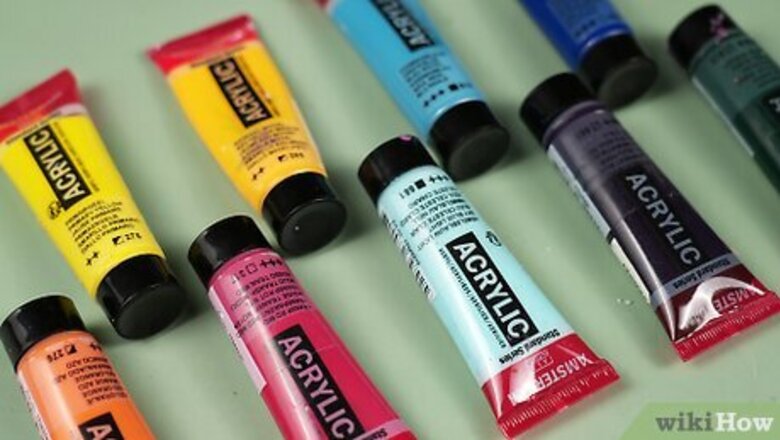
views
Selecting the Correct Paint

Use acrylic paints. Acrylic paint can be found in a range of colors, including metallic and glittery shades, and it can be found at an arts and crafts store. It can be applied to many surfaces and it adheres well to faux leather. Acrylic paint does not fade as easily as other paints. It is also flexible, making it is less likely to crack over time.

Choose a leather paint. Leather paint is an acrylic-based paint that can be found at your local arts and crafts store. It comes in a wide variety of colors and is specifically formulated to adhere to both real leather and artificial leather. Leather paint is slightly more expensive than acrylic paint and can cost between $2 and $8 for a small bottle. Although it is more expensive, it is less likely to chip or fade over time.
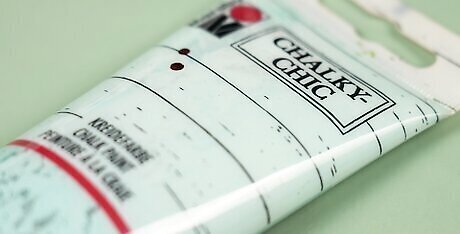
Select chalk-based paint. Chalk-based paint can add a shabby chic, distressed look to an accessory or a piece of furniture. It adheres to many different surfaces and fabrics, making it a great choice for painting faux leather. Many brands have created variations of chalky paint which can be found at an arts and crafts store or a home improvement shop.
Applying the Paint
Clean the faux leather. Use a small amount of isopropyl alcohol to remove dust, dirt, grease, and wax from the faux leather. Dampen a cotton ball and wipe the entire surface of the material. A clean surface, free from dirt and grease, will allow the paint to strongly adhere to the faux leather.
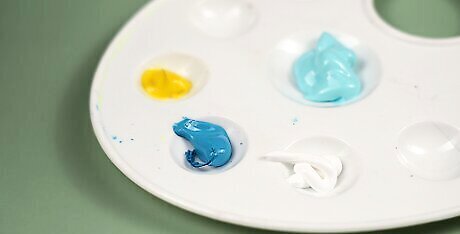
Use a paint palette. Prepare a paint palette so you can easily and efficiently access your desired paint colors as you work. You can buy a wooden or plastic artist’s palette at an arts and crafts store, or you can use a sheet of aluminum foil, a newspaper, or a magazine to house your paint.
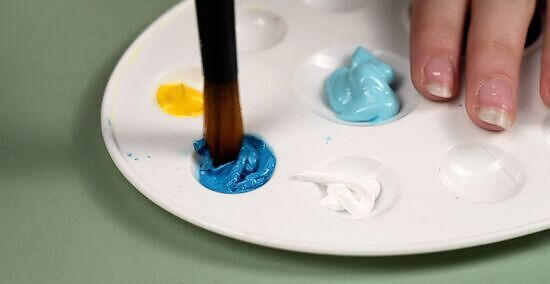
Mix a small amount of acetone to your acrylic paint. Squeeze your desired paint colors onto your paint palette and add a few drops of acetone to the paint if you are working with acrylics. The acetone will thin the paint, making it smooth and easier to work with. Gently mix the paint and the acetone together with a small paintbrush. Be sure to only add a few drops or up to a teaspoon of acetone to your paint so that the paint does not become too watery. Acrylic paint can dry quickly, so do not squeeze too much paint onto your palette at once. Gradually add a few additional drops of acetone if the paint is too thick.
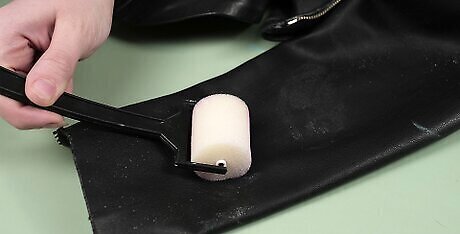
Apply a base coat for large surfaces. If you are painting a large surface in a uniform color, you will want to apply an even base coat of paint to the surface. Use the paint you selected for your project and apply it to the surface with a soft brush. This is ideal if you are working with furniture or clothing.
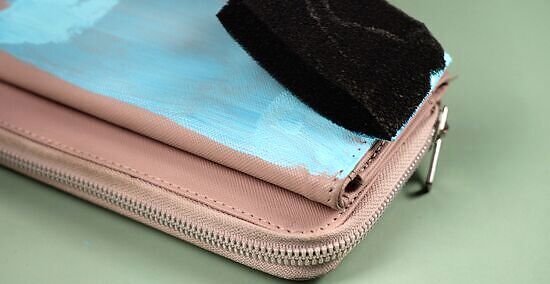
Apply paint to one side of a sponge. Lightly press the sponge into the paint from your paint palette. Use long, vertical strokes to distribute the paint across the faux leather surface. Acrylic paint can dry rapidly, so you will need to work quickly if you are working with this medium. Focus on creating long strokes when painting a large surface to avoid creating streaks. If you are working on upholstery, plan to paint only one side at a time.
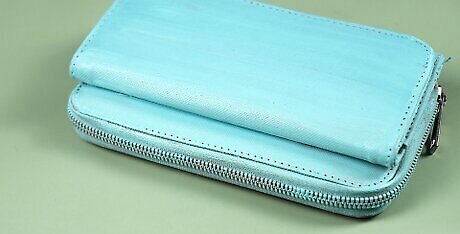
Allow the paint to dry. Before adding additional coats, the paint will need to dry completely. Place the item in a safe place where it won’t be disturbed, damaged, or moved. Wait for about 15 to 20 minutes for the coat to dry completely.
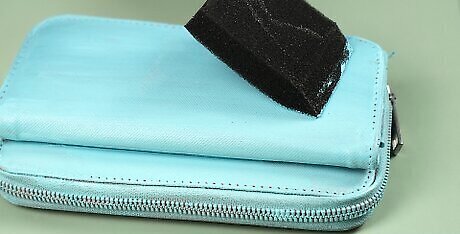
Enhance the color with additional layers of paint. After the first coat of paint has thoroughly dried, add another layer of paint to enhance the brightness and saturation of the color. As you add additional layers, be sure that the previous coat is dry before you apply another coating of paint.
Painting a Design
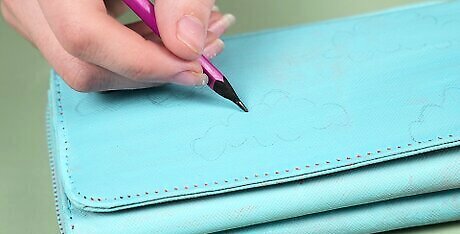
Trace a design onto the surface. Use a pencil to lightly trace your desired design onto the leather. Do not press too hard, as this will indent the leather. The paint is also semi-transparent, so any bold lines beneath the paint may show through.
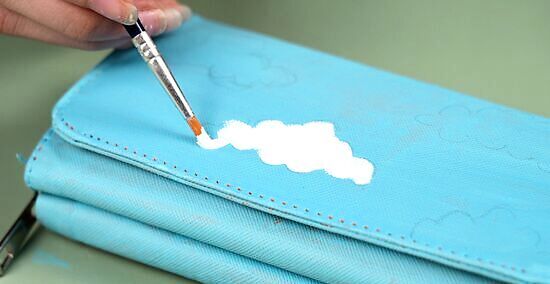
Fill in the design. Using a paintbrush, fill in your design with the desired colors. Try to avoid creating thick layers of paint. A thick layer of paint will be more likely to crack over time. If your design has multiple colors, let each color dry before moving on to the next to avoid smudging the paint. Be sure to clean your brushes each time you select a new paint color to work with. Keep a small cup of water next to your workstation. Dip the paintbrush in the water before placing it into another color.

Clean up mistakes with acetone. If you make a mistake while painting, use a small amount of acetone on a cotton ball or cotton swab to gently lift away the paint. Once the paint is successfully removed and the area has dried, you can continue painting.

Let it dry. When you have finished painting your design, put it aside and let it air dry. The item should be secured in a safe place where it won’t be damaged or disturbed. The paint should dry within 15 to 20 minutes.















Comments
0 comment